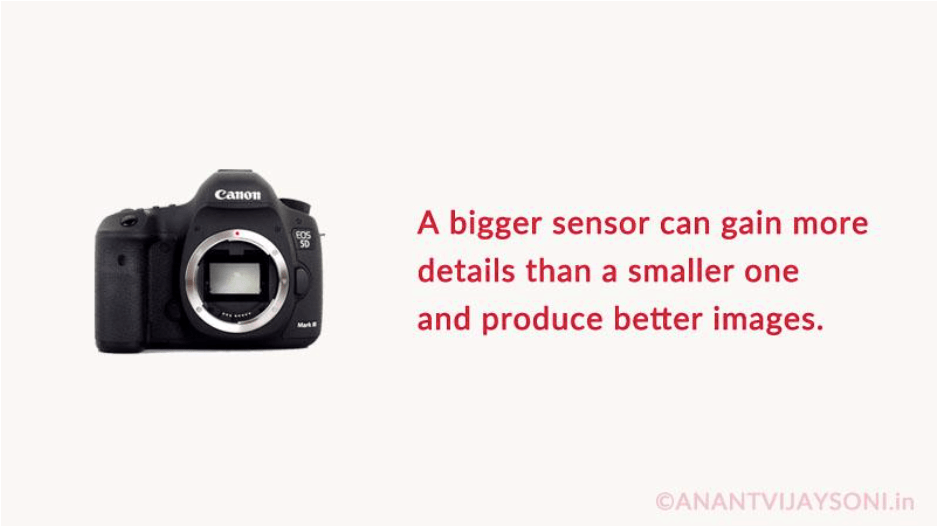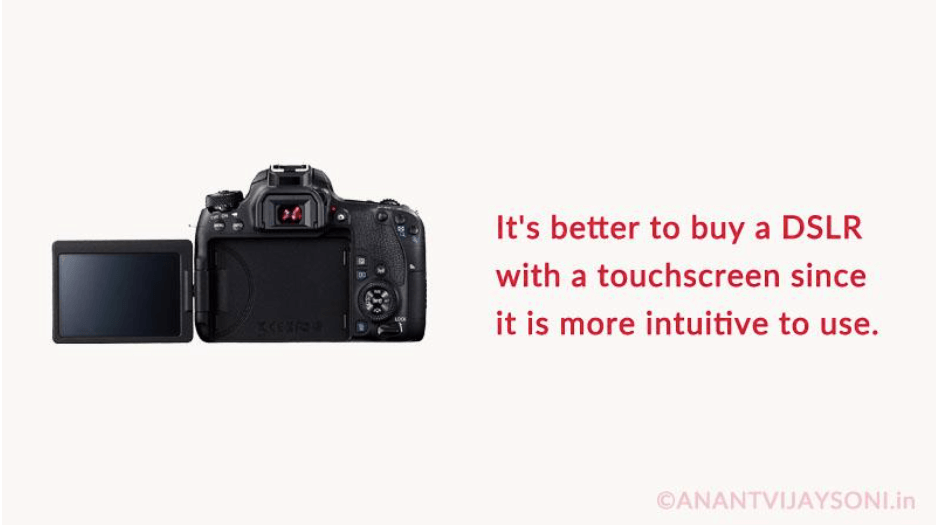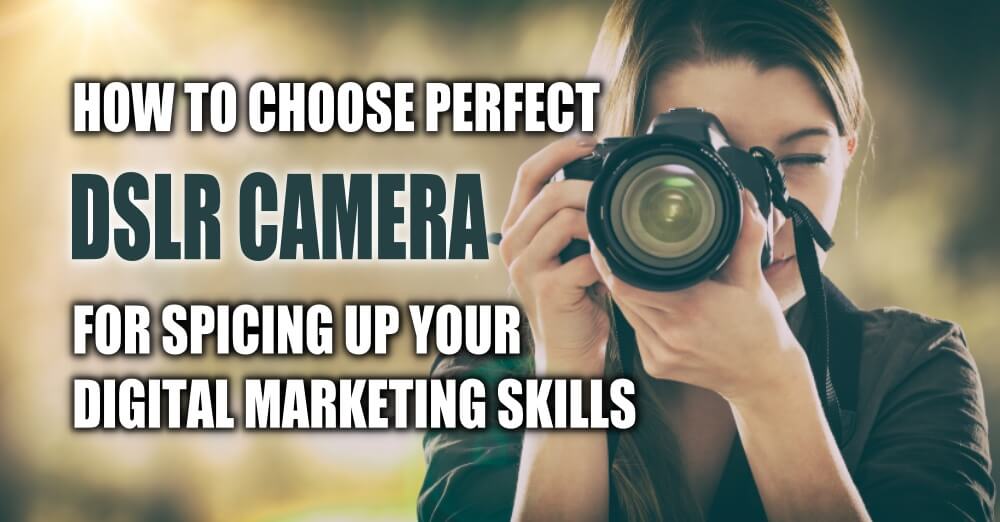In this era of the internet revolution, distance matters the least when we're connected each other with the power of the web.
That's where digital marketing comes in to fill the gap between the audience and the provider.
To be a successful digital marketing expert is by no means an easy task. It involves thinking out of the box to keep the people interested in your product or service.
To make your marketing campaigns viral and as authentic it can be, having a DSLR camera helps a lot.
Some of your ideas may not find enough supporting materials such as a specific type of photo or video online, and in such situations, a DSLR camera can become the make or break deal between you and the campaign.
In this article, we'll be giving you a rough heads up on how to choose the best DSLR cameras in the market which will provide you with a serious boost of productivity as a social media marketer.
Without any further ado, let's start with the topic!
Table of Contents
Digital Marketing and Social Media
Before discussing the DSLR cameras, let's do a quick primer on the topic of digital marketing and social media.
The term digital in digital marketing itself indicates something related to web and electronics.
In reality, before the advent of the internet, as we know it, there was digital marketing in existence.
Mainly through advertisements in televisions and radios, the service providers were able to reach out to the customers before the advent of the web itself.
The main problem with this type of marketing tactics was that targeting a specific set of individuals who might be interested in a particular product was not possible. There were no data of the audience available at the time for targeted marketing.
With the internet revolution and the advent of social media, the companies running these networks were able to get hold of precious user data such as the age, gender, location and even the personal traits such as likes, dislikes, and hobbies.
This valuable insight into a person's character became the driving force behind the success of digital marketing through social media.
We are able to target people more specifically nowadays by setting up certain filters, and this delivers an unprecedented success rate when compared with former practices.
The rate of engagement is more and the live interaction possible between the audience and the marketer promotes an environment of trust, which is very much essential for a successful digital marketing campaign.
Furthermore, the cost of digital marketing through social media is less than advertising through television and radios.
If you have a DSLR and a laptop, you can personally create content and set up the plan without spending an extra dime on support for others.
What is a DSLR camera?
DSLR stands for Digital Single Lens Reflex cameras.
These cameras come with a mirror inside the chassis which will reflect the incoming light from the source (the object you are trying to capture) on to a viewfinder at first and when you click the picture, on to the sensor behind the mirror and shutter.
The reflex action of the mirror which moves back and forth while clicking images gave these devices the name single lens reflex cameras.
Since there is only a single mirror which alternates the view from the source to the viewfinder and the sensor, the image you'll preview on the viewfinder is pretty much what you get from clicking the picture.
This result is a much more exact output which you had wished for while capturing the photo.
A good DSLR camera should always be in the arsenal of a digital media marketing professional.
Knowing the in and out of these devices helps you create better content for the campaign's online.
HOW TO CHOOSE THE PERFECT DSLR CAMERA FOR YOUR CAREER AS A DIGITAL MARKETING EXPERT?
There are a lot of cameras available in the market at different price points.
Choosing one of the thousands is a tough decision indeed, especially when you're spending some serious amount in this purchase.
Fret not, we have a few tips for you to a better purchase experience regarding a DSLR camera in this section of the article.
Read dutifully and you're all set!
1. Budget
Without a solid budget in mind, you will probably never be able to zero in on a product – be it a digital camera or a smartphone.
You should have a maximum budget up to which you're comfortable in spending for a DSLR camera, before setting to scout for the product.
More money does not always equate to the best returns. Understand your use cases, estimate your revenue/income and then plan accordingly.
Spending a lot of money on a single product such as a camera and being left with nothing else might result in disastrous effects for a digital marketer.
2. Sensor Type
Generally, DSLR cameras come with two types of sensors on board – APS-C (Advanced Photo Systems type C) sensors and full frame sensors.
Both of these sensors have their own merits and demerits which we will discuss briefly in this section.

If you're a social media marketer and deals with a lot of wildlife, sports and other scenarios which require longer focal length, the APS-C sensors are the best.
In simple words, for long distance photography, go for an APS-C sensor camera.
This sensor is relatively smaller than a full frame sensor can be found in most of the entry-level and mid-range DSLR cameras.
Full frame sensor cameras are used mainly for portrait mode photos such as an object closer to you, photos of persons, animals and such.
The bigger size of the sensor allows in for more light, resulting in better details than a camera with APS-C sensor.
3. Image and Video Stabilization
Not many of us have a steady pair of hands to click perfectly still images and smooth videos without jitter.
We know it and the camera manufacturers know it. That's why we have an option to purchase a camera with stabilization features.
The automatic stabilization technology will compensate for our hand movements while clicking pictures or shooting videos and make the photo/video much cleaner and blur/jitter free.
If you wish to do professional quality advertisement campaigns on social media, invest a couple of bucks more in a DSLR camera with stabilization features.

Purchasing a gimbal is expensive and not many can afford the same.
There are two types of stabilization techniques involved in a DSLR camera – Optical Image Stabilization (OIS) and Electronic Image Stabilization (EIS).
Optical Image Stabilization (OIS) is a hardware-based stabilization technique which involves a small motor inside moving the lens or sensor compensating for the handshakes.
Electronic Image Stabilization (EIS) is a software-based solution to curb the shakes and jitters while shooting pictures with the DSLR camera. EIS can be found on most of the modern DSLRs, but it doesn't hurt to check before you purchase one.
If you'd ask us, we will definitely suggest you buy a DSLR with Optical Image Stabilization for professional quality photos and videos, even if it means a few bucks more expensive.
4. Auto Focus
Auto Focus is an important aspect of a high-quality DSLR camera. In general, more the number of autofocus points, better it is for sharp and clear pictures.
Most DSLR cameras come with Phase Detection Auto Focus (PDAF) with multiple focus points for better framing of your subject.
Expensive DSLR cameras in the markets such as the Canon 5D Mark III has about 61 AF points.
As a digital marketer looking for creating top-notch content, a DSLR with multiple AF points helps in clicking the best possible shot for his/her campaign without much effort.
5. Monitors
Almost all DSLR cameras come with a color display which acts as a live viewfinder. This monitor can be also used to tweak the settings of the camera, preview images, and videos etc.
Having a good quality monitor helps you to analyze your work from the camera itself rather than needing to hook it to a laptop.

DSLR cameras offer functions such as touch focus options which will help to frame the shot better without complex operations.
Tiltable screens offer the flexibility of taking off the shelf angled shots much easily with easy preview options.
6. Video Recording
A good quality DSLR should not only be a great photo capturing device but also be capable of recording high-quality videos.
Digital marketing campaigns often require videos for conveying their ideas to the public.
Most of the DSLR camera nowadays support a minimum of full HD video recording at 1920 x 1080 pixels. Check for the maximum resolution at which the DSLR can shoot videos.
4K video capability will greatly help you to work with the video afterward while editing, adding graphics to your content etc.
The above-mentioned stabilization technology helps you shoot smooth jitter free videos without owning an expensive gimbal.
7. External Lenses and Accessories
DSLR cameras are highly versatile electronic gadgets which can be modified pretty easily.
These cameras come with interchangeable lenses. Since the sizes of the lens connector is a standard in the industry, you have the option to use lenses from different brands in your camera.
There are zoom lenses for landscape photography, lenses for portrait mode photos and such.
DSLR cameras can house accessories such as external mics and flashlights. External mics are used while shooting videos and you need to record the accurate sound around.
A built-in flashlight can be inadequate at times. In such a scenario the option to mount external flashlight proves useful.
Owning a tripod is almost a necessity if you're planning to do product photo shoots for your digital marketing campaign. A remote shutter button helps in this regard as well.
8. Connectivity Features
Wireless connectivity is the norm with gadgets these days.
Features such as Wi-Fi and Bluetooth will enable DSLR cameras to be paired with your smartphone or laptop for remote controlling and quick transfer of files between the devices as well.
Devices such as Bluetooth shutter release button will let you frame the shots from a distance without actually be in contact with the camera.
9. Battery Life
The term battery life is a misnomer when it comes to the cameras.
It's not calculated as how much time the camera will last on a full charge but rather how many shots can be captured on a single charge counts.
Most of the DSLR camera provide 200-400 shots on a single charge. Since the batteries are user removable, carrying additional batteries is not much of an issue with these devices.
Final words
We conclude this informative article by stating that owning a DSLR camera is an absolute must for a digital marketer who wishes to shine in the field with creative ideas and techniques.
Having a DSLR camera at your disposal equates to the flexibility of work timings, the possibility of experimenting with ideas on your own and cost-effectiveness.
We sincerely hope this explainer post just gave you the basics of what to look for while buying an expensive DSLR camera in the market.
We wholeheartedly wish you a rewarding purchase experience and thanks for your time on our website!
Cheers!





